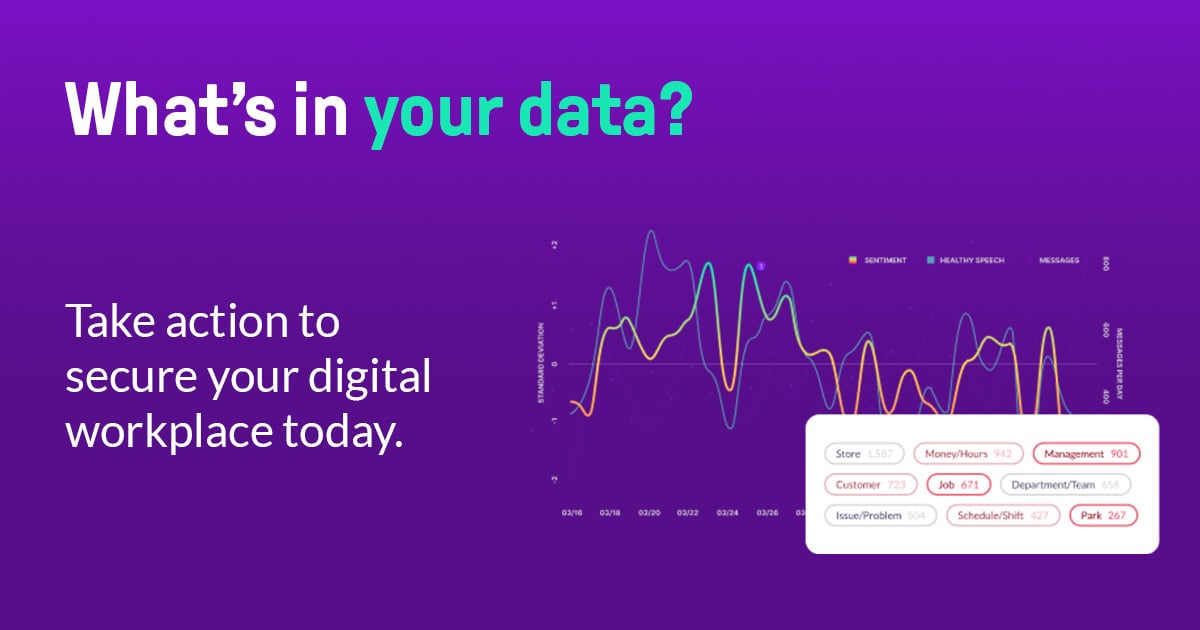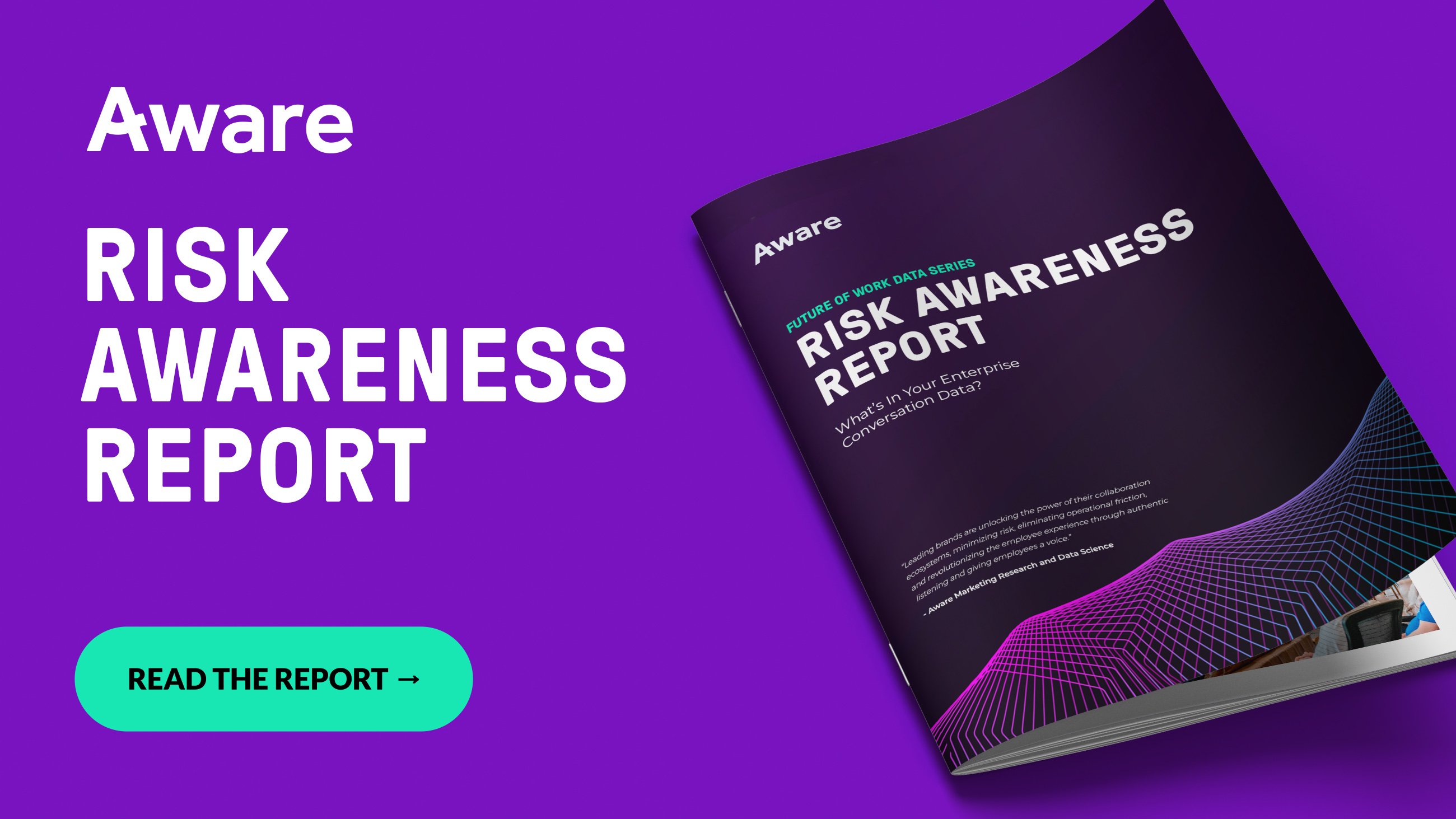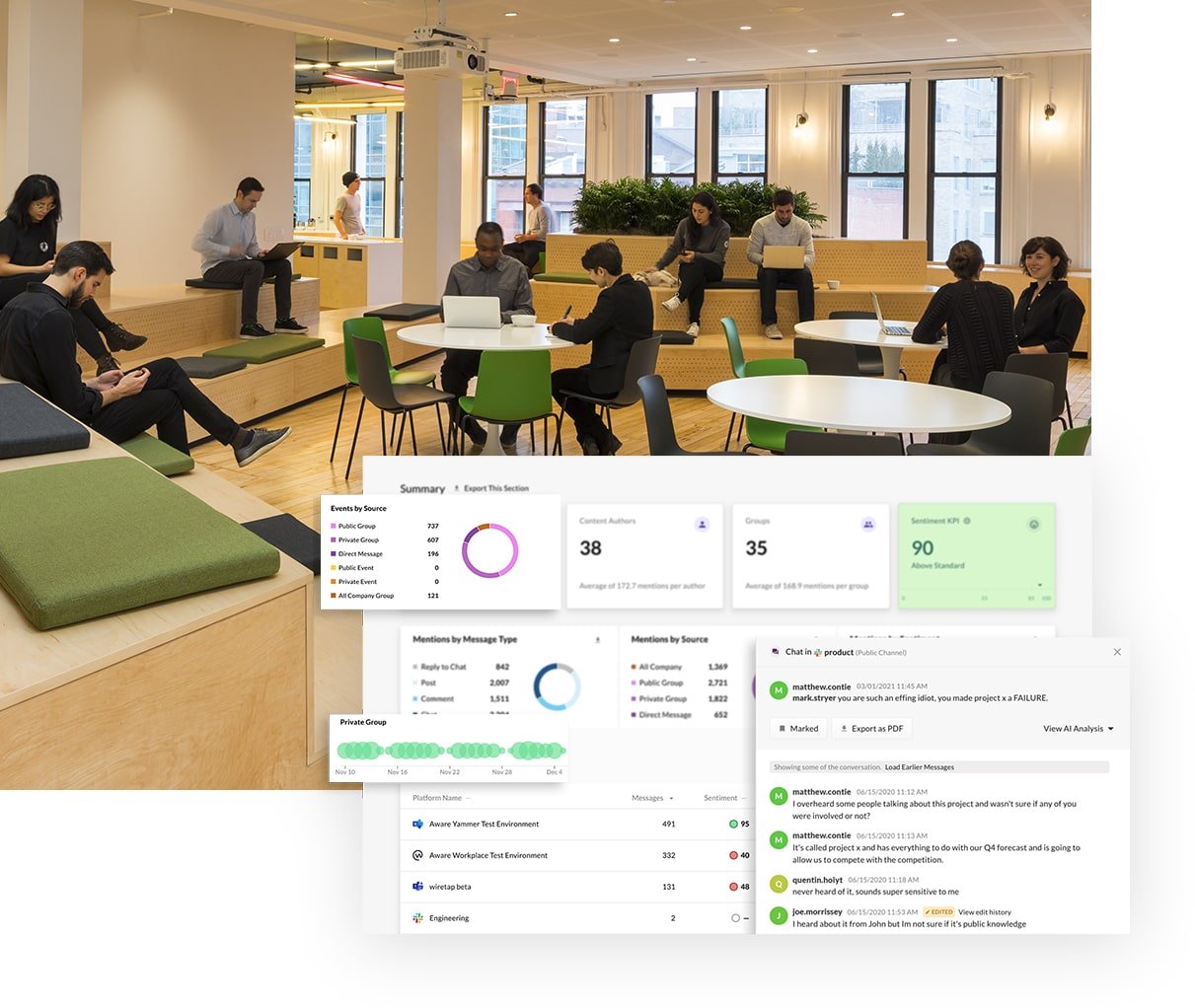Why Businesses Need DLP for Collaboration Tools
by Aware
First Published Aug. 2023. Updated Mar. 2024.
Data loss prevention (DLP) tools are essential for modern, online businesses to ensure that sensitive and confidential information is protected from unauthorized access or exfiltration. Today, most companies use a DLP to secure email transmissions, file transfers, cloud applications and more. However, the widespread adoption of collaboration platforms like Slack, Microsoft Teams, and Zoom has created a new risk surface for data breaches that is going largely overlooked. Here’s what you need to know about the risks of collaboration, the scale of exposure, and how to implement DLP solutions for this dataset.
Collaboration adoption is on the rise
Over 90% of organizations use at least two collaboration tools. Almost 80% of the Fortune 100 use Slack, and 91% use Teams. From enterprise social networks to real-time messaging applications and cloud-based document services, digital collaboration has transformed the way modern businesses run. Today’s employees spend 57% more time collaborating than they did pre-pandemic, generating massive amounts of unstructured data in the process.
In one month, a company of 15,000 employees will generate over 8.6 million messages. Aware research shows that dataset will include:
- 1723 passwords
- 913 credit card numbers
- 51,694 pieces of company-sensitive data
Collaboration use is growing exponentially, and so is the scale of the risk that lurks within this dataset. Taking charge of collaboration tools and mitigating this risk must be top priority for information security leaders as the digital transformation continues to unfold.

Discover what risks lurk within your business data now with your free, customized report.
The risk surface area modern leaders must confront
Today’s collaboration tools contain several types of sensitive data, each of which can expose the company to unnecessary risk.
Confidential information, such as intellectual property, trade secrets, and business strategies
Regulated information, such as personally identifying information (PII), protected health information (PHI), and credit card industry data (PCI)
Harassment and toxicity, including workplace bullying, sexual harassment, and hate speech
A breach of any of these kinds of information could open the company up to everything from loss of IP and competitive advantage to reputational harm, regulatory fines and penalties, and lawsuits. Yet the majority of businesses aren’t monitoring this dataset at all or are leveraging traditional DLPs that weren’t built to handle the unique complexities of collaboration.
Without adequate controls designed to work natively with collaboration tools, there are still gaps through which vulnerable data can be lost. For example, traditional DLPs might rely on batch ingests rather than real-time uploads, creating windows where a malicious actor can exfiltrate data and destroy the evidence. Or legacy software might attempt to map informal collaboration conversations to email structure, resulting in loss of context. And legacy DLPs may lack the capacity to capture gifs, emojis, or reactions that can entirely change the meaning of a sentence.
|
Have you seen the new guy in marketing? 😍 Have you seen the new guy in marketing? 🥴 Have you seen the new guy in marketing? 💅 |
Traditional DLPs can’t handle this dataset
Data loss prevention software was originally designed to stop data loss by ringfencing endpoints or transactional, 1:1 processes like email and file transfers. They typically work by pattern matching against policies and keywords to surface violations. Administrators may find their in-house solutions struggle to handle the disjointed, unstructured nature of collaboration tools, which enable users to login from any device, instantly transmit large amounts of data and documents, converse in private and restricted channels where even admins lack visibility, and edit or delete messages at any point, leaving no record behind.
Applying a legacy DLP solution to collaboration tools rarely results in securing the data they contain, but frequently creates an illusion of security that can delay time-to-discovery and exacerbate risks, not mitigate them.
What modern leaders need is a DLP solution built for the nuances of collaboration, that can react in real time to detect and mitigate risky behavior as it happens. That’s why some of the world’s leading organizations augment their traditional DLP with Aware DLP for collaboration.
The future of collaboration DLP
Aware was purpose-built to understand the nuances of collaboration data and capture a complete record of every interaction that happens in a collaboration tool in real time. By connecting natively to top workplace collaboration tools like Slack, Teams, Webex, and Zoom, Aware secures business-critical information without impacting the end user experience—a vital component of any infosec strategy if administrators want to limit the appeal of shadow IT solutions. These cross-platform capabilities also enable security leaders to consolidate collaboration DLP into one centralized platform, simplifying the stack and reducing complexity.
Related: Get Slack data loss prevention
Using proprietary AI and industry-leading natural language processing (NLP) designed and trained on a carefully curated dataset of real collaboration conversations, Aware delivers modern leaders more insight than ever into the risks and opportunities locked within collaboration tools. When a policy or rule is triggered, machine learning automations can immediately preserve the content and context surrounding the violation, notify stakeholders, and even coach employees on acceptable use policies in real time.
With customizable and flexible configurations, Aware can protect collaboration 24/7 from common regex violations and brand-specific content alike, while securing its own dataset using role-based access controls (RBAC) and audit trails. Using Aware, infosec leaders can effortlessly surface and correct unwanted behaviors in collaboration, resulting in more violations contained, reduced risk exposure, and greater flexibility to endorse collaboration throughout the enterprise.
Final thoughts
Employees love the speed and flexibility of collaboration tools, but reducing risk within the datasets they contain is an ever-present challenge for modern infosec leaders. Aware supports the near real-time detection of risky behaviors and sensitive information sharing, provides a full contextual view of violations, and accelerates forensic search and investigations by surfacing the who, what, when, where, how, and why of data loss incidents. Using Aware, organizations can augment traditional DLP solutions with powerful AI data analysis that protects sensitive data in all the places where employees collaborate.











